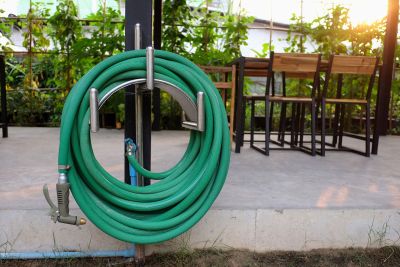About Garden Hose Maintenance
A garden hose is essential in the backyard, providing you with a movable water source to irrigate plants or wash down the wheelbarrow and other materials. You’ll want to avoid cheap, low-quality products and buy a tough, well-made hose that will last. Once you invest the money, it just makes sense to care for the hose. Unlike metal tools, hoses don’t need to be oiled down, but there are other rules for hose upkeep. The first rule of hose upkeep is to avoid storing in direct sunshine. The UV rays of the sun can damage, crack, or rupture the exterior layer of the hose. That means that any water remaining in the hose will heat up and damage the inner tubing. Does this mean you shouldn’t water with the hose when the sun is out? It doesn’t mean that, although it’s usually better for plants to water in the morning or evening rather than during the heat of the day. Leaving the hose out in the sun for hours causes the damage. Another garden hose maintenance tip is to repair leaks promptly. Use a rubber patch and super glue for pinhole leaks. For small holes, use the glue in a tube patch kit. Sand the area down with fine-grit sandpaper, apply the glue and let dry, then put the rubber piece on top.
How to Make a Hose Last
To extend your hose life, you’ll want to drain the hose after use. Don’t rely on the nozzle to cut the water when you are done. If you do, the water pressure builds up inside the hose and can burst it. The better procedure for garden hose upkeep is to turn off the water at the spigot and allow the hose to drain. Another way to keep your hose in good shape for longer is to avoid dragging it by the spray nozzle. This weakens the nozzle connection and causes leaks. Also, don’t just leave it in a pile when you are finished with it. Using a hose reel prevents kinks that create tears. Finally, there is the issue of storing a hose over winter. If you live in a cold winter region, you’ll want to bring the hose into the garage (or somewhere inside) to prevent freezing. Drain the entire hose first, then coil it on a hose reel and carry it inside.
